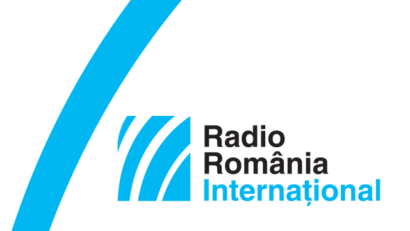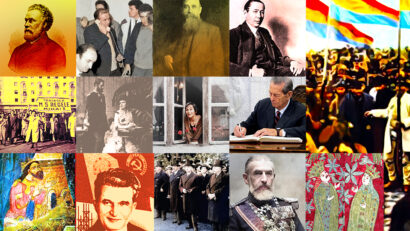Banned Publications in Communist Romania
The Special Fund or the Secret Fund of the Library of the Romanian Academy appeared a few months after August 23, 1944

Steliu Lambru, 27.10.2025, 13:00
The communist regime in Romania was installed on March 6, 1945 with the support of the occupying Soviet Union, and the changes it began to implement were radical and harsh. From the structure of the state to the treatment applied to citizens and their rights, nothing remained outside the control of Marxist-Leninist ideology and the Soviet model. Everything was under the sign of prohibition, violence, harsh censorship control, exemplary punishments, while propaganda claimed the opposite. Thus, it became self-evident that everything that had been in Romania before 1945 would be denigrated or hidden from people’s eyes. Censorship operated forcefully against publications from the years of democratic Romania, thus appearing in cultural institutions, libraries and archives, something never seen before: secret printed collections. One of these funds was the one in the Library of the Romanian Academy, the most important depository of printed matter in Romania.
The Special Fund or the Secret Fund of the Library of the Romanian Academy appeared a few months after August 23, 1944, the date on which Romania joined the anti-fascist alliance and Soviet troops occupied the country. In December 1944, the Ministry of Foreign Affairs sent Address No. 2323 inviting the Romanian Academy to send a delegate to a conference concerning the application of Article 16 of the Armistice Convention with the United Nations. It stated in text that “The printing, import and distribution in Romania of periodicals and non-periodicals, the presentation of theatrical performances and films, the operation of postal, telegraph and telephone stations will be carried out in agreement with the Allied (Soviet) High Command.” On behalf of the Academy, the librarian Traian Popovici was sent to the meeting. The agenda consisted of three points: the complete ban on anti-Soviet and pro-fascist publications, the establishment of a commission to supervise the content of publications authorized to circulate and the methods of destroying anti-Soviet and pro-Nazi works and the removal of some passages from authorized publications. It was the beginning of what, from the following year, would be the index of prohibited publications. During the 45 years of operation of the communist regime, 363 books and 182 periodicals of the Romanian Academy Library were classified.
In those extremely harsh conditions, the officials of the Academy Library made enormous efforts to ensure that the printed materials included in the index would not disappear. Nicolae Noica, director of the Romanian Academy Library, at the launch of the institution’s history in the years 1948-1989, sketched a landscape that seems to have been taken from a Renaissance painting depicting hell.
“Taking into account the times, especially in the first years of communist power, it can be said that, by establishing this fund, the attitude of those who dealt with the destinies of the Library was rather protective towards these books, which had become inconvenient for the new political power. In other libraries in the country, books and magazines were turned to pulp and burned. As was natural, with the passage of time, the secret fund experienced some improvements. After 1958, the banned books were gathered in a special warehouse. According to the instructions for handling library publications, works subject to censorship were labeled according to subject matter. There were ‘prohibited publications’ and ‘reserved publications’, and there was a special room where reading was only allowed under supervision.”
What did the Special Fund of the Romanian Academy Library contain? Books signed by representative authors of Romanian culture, led by poet Mihai Eminescu and historian Nicolae Iorga. Also, the written testimonies, diaries, correspondence, speeches and any other public manifestations of the sovereigns of Romania had disappeared. Texts by the exponential authors of Romanian democracy such as members of the Brătianu family, but also by many others, were no longer accessible to anyone. Foreign authors who had praised Romania were also hidden in the Special Fund. Historians had drastically restricted access to the texts of fascist authors, and historical research was seriously flawed. For more details, listen to Nicolae Noica.
“Among the books in the secret fund are a series of political articles by Eminescu. Then, in this secret fund, we also see a book signed by Gheorghiu-Dej, ‘Five Years of the Liberation of Romania’. It should also be added that with the change in political perspective and processing, starting in 1960, a series of books that had been banned returned to the public shelves of the Library, including many by the historian Iorga. In addition to books and periodicals, the secret fund also included many photographs of personalities related to the history of the monarchy or historical parties. Finally, there were also a series of maps such as the map of southern Romania from 1864, the map of the counties of Romania from 1862-1868, the map of the border between Romania and Hungary provided for by the Treaty of Trianon. The history of the Special Fund or the Secret Fund at the Library of the Romanian Academy is one of the communist regime that treated with brutality and contempt for everything that had come before it. In the name of an intolerant and criminal ideology that claimed to act on the highest humanistic principles, such a regime waged an irrational battle with people and human nature, which it lost.






























